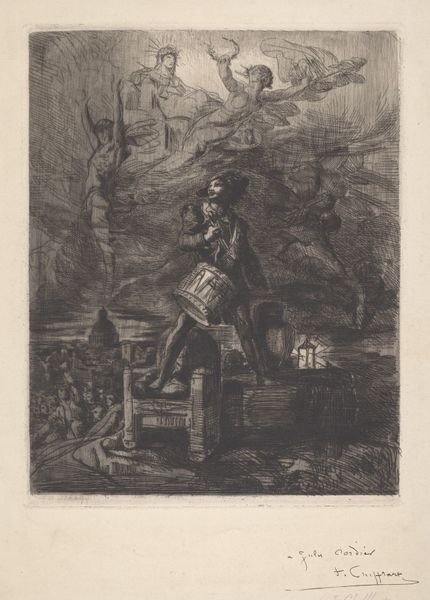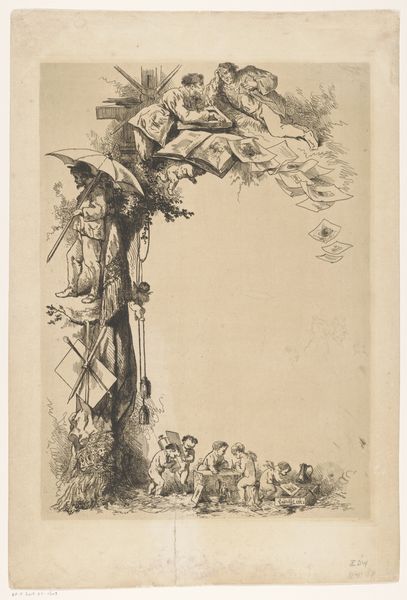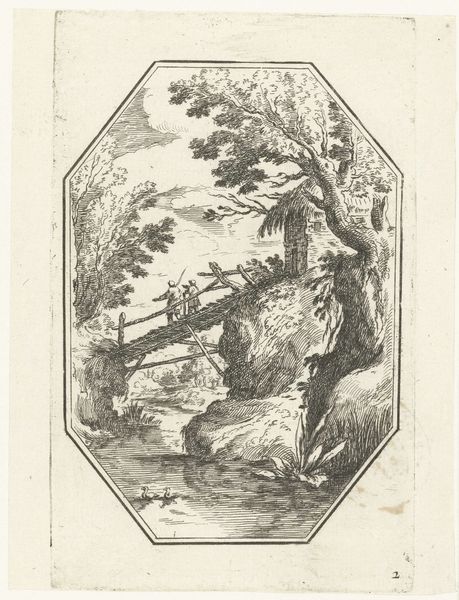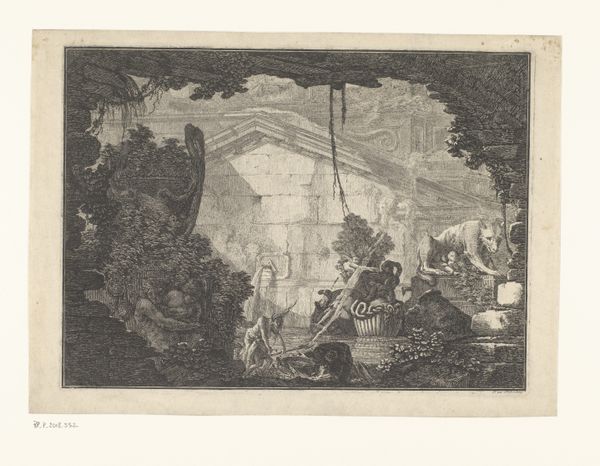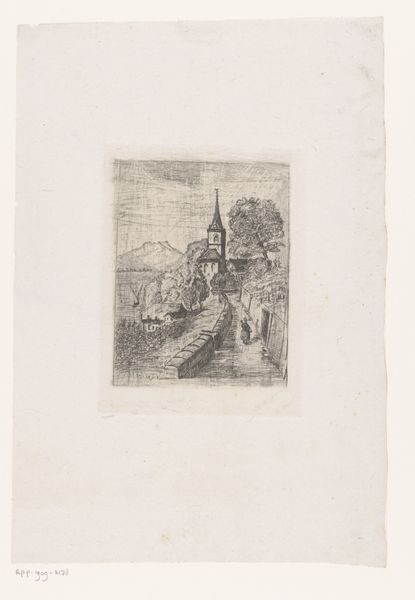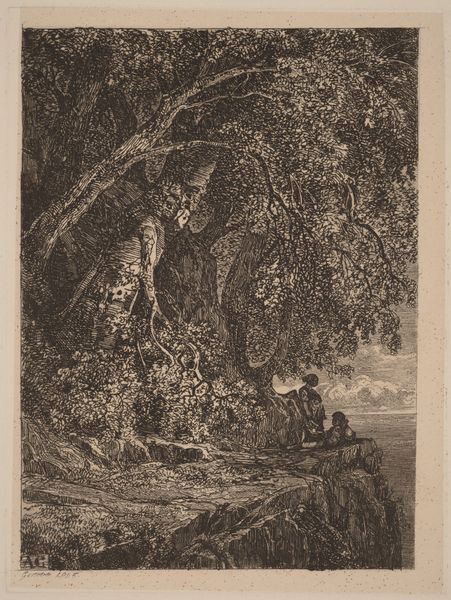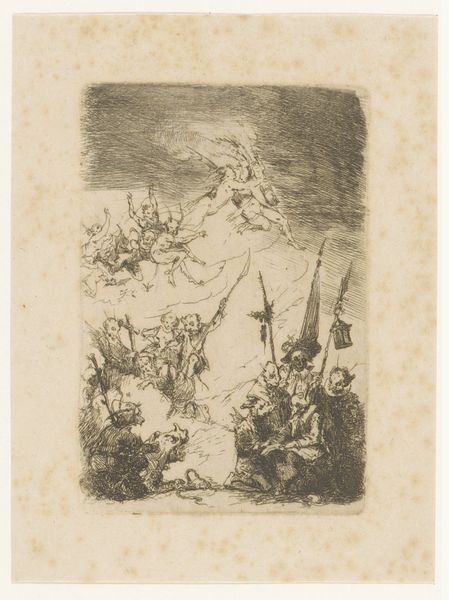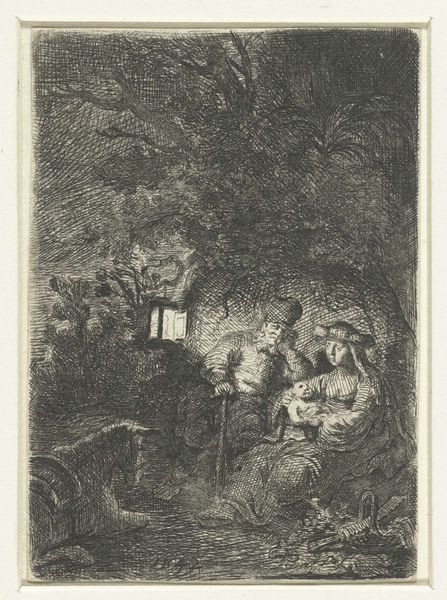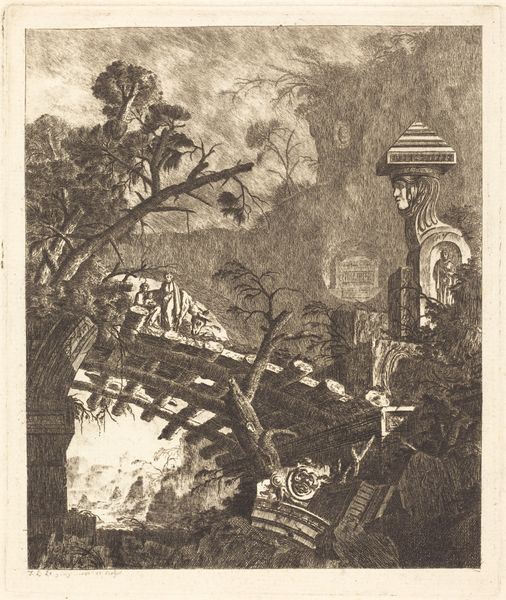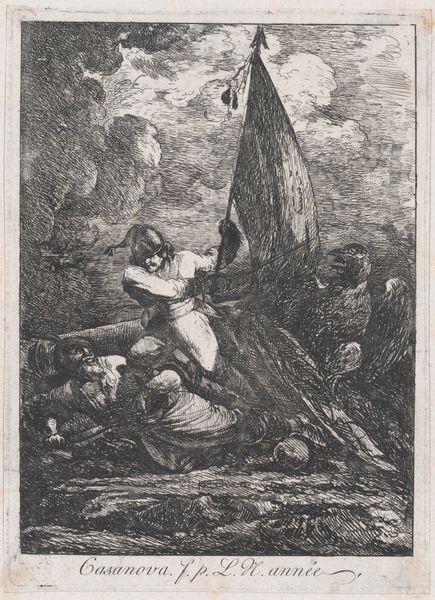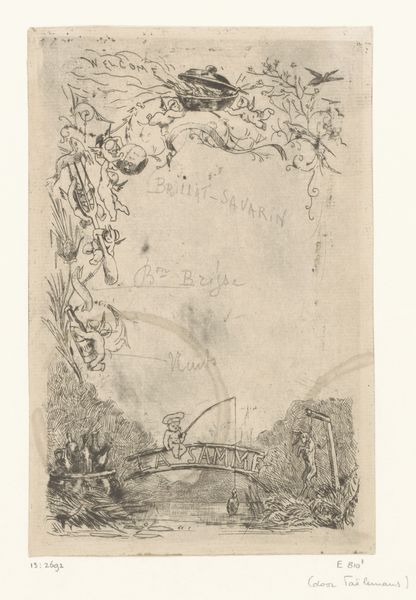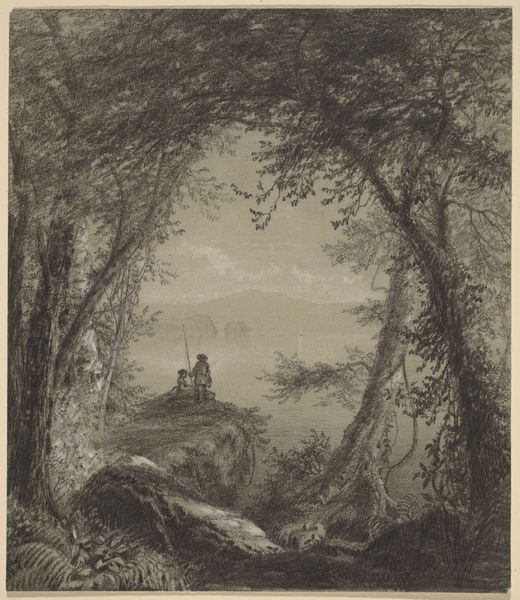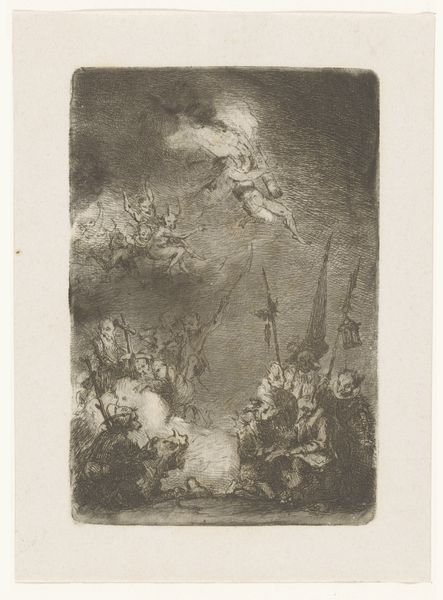
print, etching, engraving
#
narrative-art
#
baroque
# print
#
etching
#
figuration
#
11_renaissance
#
line
#
history-painting
#
engraving
Dimensions: height 131 mm, width 100 mm
Copyright: Rijks Museum: Open Domain
Editor: This print, "Christ crucified between the two thieves," was made after 1641 by an anonymous artist and held in the Rijksmuseum. The figures feel packed together and are represented through quite active line work; it gives the whole plate a rather unsettled feeling. How does its composition strike you? Curator: The density you observe contributes to a palpable tension, stemming from the baroque aesthetic of imbuing stark dynamism. Note the dominance of the black lines, employed to define forms while concurrently suggesting depth within the oval plate. How do you think the line-work manipulates the space in the piece? Editor: I see that it emphasizes certain planes, so the depth of field sort of collapses and expands in certain areas. Can you tell me more about that? Curator: Precisely! Consider the varying degrees of hatching and cross-hatching. Observe how the artist uses denser concentrations of line to denote shadow and form. Conversely, lighter areas, achieved with sparser lines, suggest illumination. Also consider, why employ engraving and etching? The synthesis lends a tactile, almost sculptural quality, doesn't it? Editor: It definitely gives it a three-dimensional feel, especially for such a small work! Curator: The combination of these formal elements directs the viewer's eye around the plate, fostering an emotional engagement that transcends the narrative subject matter. This aesthetic end is the essence of the work. Editor: That focus on the push and pull of dark and light and that technical process adds so much complexity to the experience. Curator: Precisely, and a profound visual effect which is truly effective here.
Comments
No comments
Be the first to comment and join the conversation on the ultimate creative platform.
